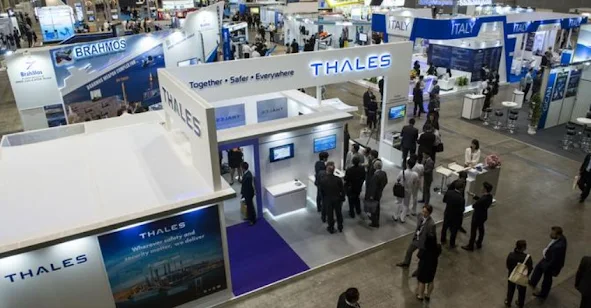 |
| The event brought together hundreds of military representatives and industry leaders from across the world |
International Military - It is reported that Japan is planning to change the law restricting arms exports from the country. The Japanese government is now granting permits to export weapons to 12 countries in Southeast Asia.
According to Defense Security Asia, in addition to transferring to Southeast Asia, Japan will also look to European countries such as France, Italy, England and Italy. The country will also export its weapons systems to the United States.
Read Also: Lyrics Of Chinese-Made L-15 Plane After Suspending F-35 Purchase, UAE Strains Relations With US
It should be remembered that the transfer of arms to Southeast Asia is not new to Japan, this is encouraged because there are frequent attacks on commercial shipping from Japan and other countries, in the Straits of Malacca and the Gulf of Aden, therefore, since 2006, Japan has provided assistance to other countries. -certain Southeast Asian countries (Indonesia, Malaysia, Philippines, and Vietnam).
This is done as an effort to improve maritime security in the region, said Think China. Mostly by building infrastructure, such as ports or purchasing equipment (communication equipment, rangefinders, speedboats, hand thermal imagers, X-ray machines).
Read Also: China Denies Building a Naval Military Base in Cambodia
With the rise of neo-conservatism in Japan, the Abe Government decided in 2012 that it was important for his country to promote greater independence for the sake of the technology sector. This technology sector is intensified to manufacture weapons systems.
And to do this, Japan saw the need for viable export markets to increase manufacturing to make their products cheaper for both domestic and foreign customers. There are six reasons why Japan wants to revive its defense industry, and one of them is seeing the growing threat of China.
Japan's move to relax its arms export ban is an attempt to offset China's arms expansion, especially in the southeast Asian country. Southeast Asia is the region that operates the most Chinese products, such as Myanmar, Cambodia, Laos, Thailand, and other countries.
Read Also: 4 Russian Commanders Reportedly Killed In 4 Days in Ukraine
Followed from Defense Security Asia, the closeness of these countries has been formed for a long time because they have good bilateral and economic relations with China. By targeting countries that have limited sources of funds, China takes advantage of it by selling weapons at prices that are much cheaper than US and European products.
And it's not just a matter of price, China also offers a more attractive package, so it's very difficult for those countries to refuse. For example, a country that cannot afford to buy with cash, China offers very attractive loan packages at very low interest rates.
Seeing the dominance of China, Japan and the US certainly do not want to lose their role in Southeast Asia, and start doing something to "respond" to it. In addition to wanting to ensure Japanese companies can win arms procurement contracts in the region.
Read Also: Insulting the Prophet Muhammad SAW, Al-Qaeda Threatens to Prepare a Wave of Attacks in India
The sakura country also wants to ensure that a strategic area like Southeast Asia is not far from China, both in the economic and geo-political sectors. Southeast Asia is known to be home to the Japanese company's large manufacturing facilities, and that is critical to the solar nation's supply chain.
Although China is not a member of ASEAN, Japan is worried about its large role there, China can influence the policies of countries there, including regarding the South China Sea.
Increased militarization of the South China Sea
Countries in Southeast Asia were in fact the largest arms importers in 2006-2017, before Japan's policy of easing arms exports. It must be admitted that this massive acquisition of weapons is not only driven by the threat from China, but also from Islamic fundamentalism, separatism and competition between countries in the region.
Read Also: Finland and Sweden To Join, NATO Gives Comments on Nuclear Weapons Guarantee For Russia
These arms exports often focused on upgrading systems for the air force and navy, and Japan's "bid" to Neighboring Asia was increasingly fitting. Japan has donated patrol boats, reconnaissance aircraft, spare parts and radars to Southeast Asian countries, Think China quoted.
Known to increase tensions in the South China Sea, China is responsible for claiming 90 percent of the region. For this reason, countries in the South China Sea region, namely Southeast Asia, need military equipment assistance in the maritime and air fields.
